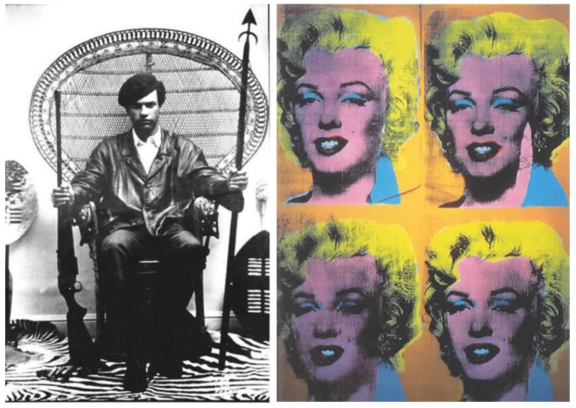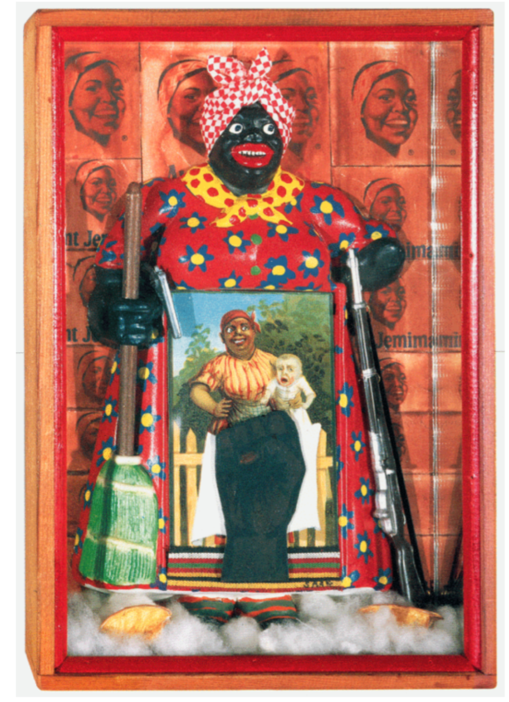The “Black Contributions” invitational, curated by EJ Montgomery at Rainbow Sign in 1972, prompted the creation of an extremely powerful and now famous work. In her article “Influences,” Betye Saar wrote about being invited to create a piece for Rainbow Sign:
“My work started to become politicized after the death of Martin Luther King in 1968. But The Liberation of Aunt Jemima, which I made in 1972, was the first piece that was politically explicit. There was a community centre in Berkeley, on the edge of Black Panther territory in Oakland, called the Rainbow Sign. They issued an open invitation to Black artists to be in a show about Black heroes, so I decided to make a Black heroine. For many years, I had collected derogatory images: postcards, a cigar-box label, an ad for beans, Darkie toothpaste. I found a little Aunt Jemima mammy figure, a caricature of a Black slave, like those later used to advertise pancakes. She had a broom in one hand and, on the other side, I gave her a rifle. In front of her, I placed a little postcard, of a mammy with a mulatto child, which is another way Black women were exploited during slavery. I used the derogatory image to empower the Black woman by making her a revolutionary, like she was rebelling against her past enslavement. When my work was included in the exhibition ‘WACK! Art and the Feminist Revolution’, at the Museum of Contemporary Art in Los Angeles in 2007, the activist and academic Angela Davis gave a talk in which she said the Black women’s movement started with my work The Liberation of Aunt Jemima. That was a real thrill.”
Now in the collection at Berkeley Art Museum and Pacific Film Archive, The Liberation of Aunt Jemima continues to inspire and ignite the revolutionary spirit.

There are two images that stand behind Betye Saar’s artwork, and suggest the terms of her engagement with both Black Power and Pop Art. The central Jemima figure evokes the iconic photograph of Black Panther Party leader Huey Newton, gun in one hand and spear in the other, while the background to the assemblage evokes Andy Warhol’s Four Marilyns (1962), one of many Pop Art pieces that incorporated commercial images in a way that underlined the factory-like manner that they were reproduced.
